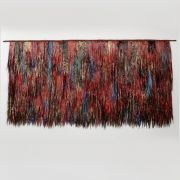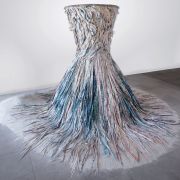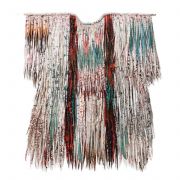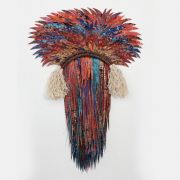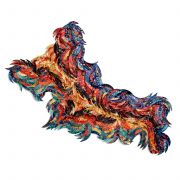Deborah Kruger
Artist Essentials
- Contact Artist
- Artist Website
- Phone: +52 3319938523
Chapala, Jalisco, Mexico, Mexico
Northern America
Artist Social
- Facebook: deborahkrugerartist
- Instagram: @deborahkrugerstudios
- Pinterest: deborahkruger
DEBORAH KRUGER ARTIST STATEMENT
Bird migration, habitat destruction and language extinction are the subjects of my work. The imagery also alludes to the migration of humans, who are similarly affected by loss of habitat due to war, economics and climate change.
The silk-screened images of endangered, recently extinct and migrating birds and related text on fused plastic bags embed a narrative that addresses the burgeoning global consumerism that contributes to the loss of bird (and human) habitat. Text is overprinted in endangered languages such as Shorthand, Yiddish and indigenous Mexican and Colombian dialects, which will be lost as the last generation of speakers pass on.
These abstract pieces are built with feathers handmade by local Mexican women and their shapes are based on maps of countries with high populations of endangered birds. I live and work on Lake Chapala, Mexico.

